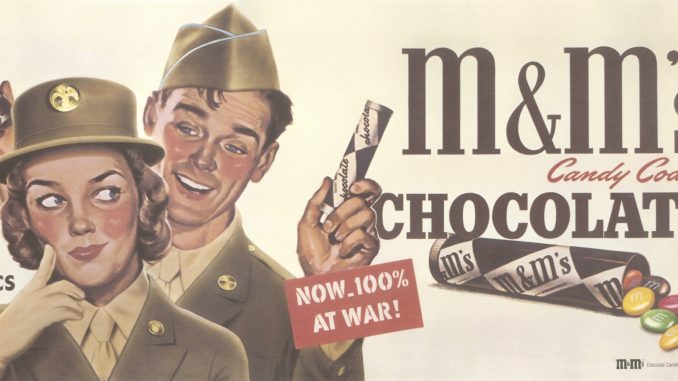
The origin story of M&M’s candies is a tale of innovation, collaboration, and military necessity that began in the early 20th century. The brainchild of Forrest Mars, Sr., son of the founder of Mars, Incorporated, and Bruce Murrie, son of Hershey Chocolate’s president, M&M’s were conceived during a time of war and quickly became an iconic treat enjoyed worldwide.
The story dates back to the Spanish Civil War in the late 1930s when Forrest Mars, Sr. observed soldiers consuming chocolate pellets encased in a hard candy shell. The shell served a dual purpose: it prevented the chocolate from melting in the soldiers’ hands and provided a convenient, portable snack. Recognizing the potential of this concept, Mars envisioned creating a similar candy using his own chocolate formula.
To bring his vision to life, Mars approached Bruce Murrie, whose family’s company, Hershey Chocolate, was renowned for its chocolate expertise. Together, Mars and Murrie embarked on a partnership to develop a candy that combined Mars’ chocolate expertise with Hershey’s resources.
The name “M&M” is derived from the surnames of Mars and Murrie, reflecting their collaboration on the project. With the backing of Hershey Chocolate, Mars established the Mars Candy Company in 1941 and began production of the new candy.
Initially, M&M’s were exclusively sold to the military during World War II. Their durability and resistance to melting made them an ideal ration for troops serving in various theaters of war. The candy’s practicality and ability to withstand harsh conditions contributed to its popularity among soldiers, cementing its status as a staple of military rations.

After the war, Mars recognized the commercial potential of M&M’s beyond the military market. In 1947, M&M’s were introduced to the general public, marking the beginning of their journey to becoming a household name.
The original M&M’s came in a single variety: milk chocolate coated in a candy shell. The candy’s signature features—its colorful shell and convenient size—quickly captured the imagination of consumers. Each M&M was stamped with a lowercase “m” as a nod to its creators, Mars and Murrie, and to distinguish it from imitations.
As M&M’s gained popularity, Mars sought to expand the brand’s offerings and appeal. In 1954, Peanut M&M’s were introduced, featuring a roasted peanut at the center surrounded by milk chocolate and a candy shell. The addition of peanuts added a crunchy texture and complementary flavor to the candy, further enhancing its appeal.
Throughout the years, M&M’s continued to innovate and diversify their product line. In 1976, the first color addition to the traditional brown M&M’s was introduced: red. This marked the beginning of M&M’s iconic “Colorworks” campaign, which introduced a vibrant array of colors to the candy lineup. The introduction of new colors and special editions, such as holiday-themed M&M’s, kept the brand fresh and exciting for consumers.
M&M’s expanded their offerings to include a range of flavors and fillings, including crispy, almond, and pretzel. Limited-edition flavors and collaborations with other brands further fueled consumer interest and contributed to the brand’s enduring popularity.
Today, M&M’s are sold in more than 100 countries worldwide and are available in an array of flavors, colors, and packaging options. From their humble beginnings as a wartime ration to their status as one of the world’s most recognizable candies, the story of M&M’s is a testament to the power of innovation, collaboration, and timeless appeal.
—This is part of the Long Island Veterans Bulletin column featured monthly in Anton Media Group publications. Christy Hinko is a managing editor at Anton Media Group and is a U.S. Navy veteran. Images and information courtesy of M&M’s brand historical archives.
Post Views: 31

